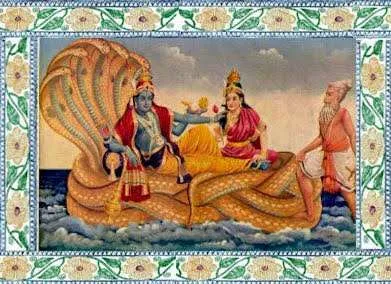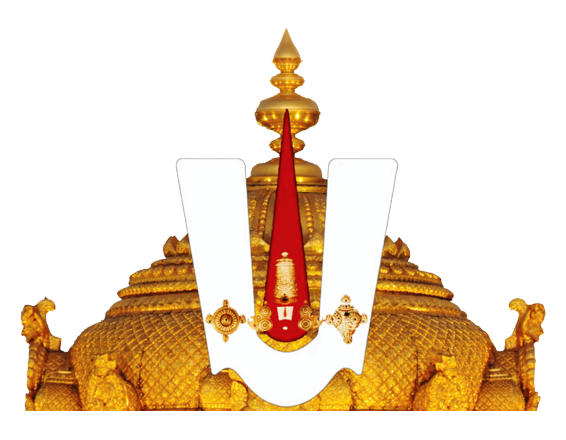Tirumala History - Story of Venkateshwara Swamy
Tirumala, also known as Tirupati, is a famous Hindu temple located in the Tirupati district of Andhra Pradesh, India. The temple is dedicated to Lord Venkateswara, an incarnation of Lord Vishnu. Tirumala is considered one of the most important pilgrimage sites in India and attracts millions of devotees from all over the world.

History of Tirumala Temple
The history of Tirumala can be traced back to ancient times. According to legend, Lord Vishnu appeared in the form of Venkateswara to save mankind from the trials and tribulations of Kali Yuga. He chose Tirumala as his abode and established the temple there. Over the centuries, the temple has undergone many renovations and expansions, and today it is one of the most grand and magnificent temples in India.
Tirumala has been a center of worship for centuries. The temple is mentioned in ancient texts such as the Skanda Purana and the Varaha Purana, which date back to the 5th century CE. The temple is believed to have been built by the Pallavas in the 9th century CE, and later expanded by the Cholas and the Vijayanagara kings in the 10th and 16th centuries respectively.
During the 16th century, the temple was under the control of the Vijayanagara empire. The Vijayanagara kings made significant contributions to the temple, including building the temple’s gopuram and constructing many other structures. The temple continued to flourish under their rule and became an important center of pilgrimage.
In the 17th century, the temple came under the control of the Aravidu dynasty of the Vijayanagara empire. The Aravidu kings made further contributions to the temple and expanded its infrastructure. They also established a trust to manage the temple’s affairs, which still exists today.
In the 18th century, the temple came under the control of the British East India Company. The British government took over the administration of the temple and established a system for collecting donations from devotees. This system is still in place today and is known as the “hundi” system.
In the 19th century, the temple underwent major renovations and expansions. The temple’s gopuram was rebuilt and the temple’s main deity, Lord Venkateswara, was adorned with gold and precious jewels.
Today, Tirumala is one of the most important pilgrimage sites in India and attracts millions of devotees from all over the world. The temple’s infrastructure has been greatly expanded to accommodate the large number of pilgrims who visit every year. The temple is also home to many other deities, including Sri Padmavathi and Sri Narasimha.
History of Tirumala Tirupati Devasthanam (TTD)
Tirumala Tirupati Devasthanam (TTD) is the organization that manages the famous Sri Venkateswara Temple, also known as Tirumala Temple, located in the Chittoor district of Andhra Pradesh, India. The temple is dedicated to Lord Venkateswara, an incarnation of Lord Vishnu, and is considered one of the most important pilgrimage sites in India. The history of TTD is closely linked to the history of the temple, which can be traced back to ancient times.
In 1932, the TTD (Tirumala Tirupati Devasthanams) was established as a trust by the government of Andhra Pradesh to manage the temple’s affairs. The organization’s main goal is to ensure the smooth running of the temple and to provide a comfortable and safe environment for the millions of devotees who visit the temple every year.
The TTD is responsible for the maintenance and upkeep of the temple, including the provision of accommodation and food for the devotees, and the organization of various cultural and religious programs. The TTD also manages the many other temples in and around Tirumala, including the Sri Padmavathi Temple and the Sri Narasimha Temple.
In recent years, TTD has also taken steps to modernize and improve the temple’s infrastructure, including the construction of new buildings, upgrading of existing facilities, and the introduction of new technologies to make the temple visit more comfortable for devotees.
In conclusion, Tirumala Tirupati Devasthanam (TTD) is an organization that plays a vital role in the management and preservation of the Sri Venkateswara Temple, also known as Tirumala Temple. Its history is closely linked to the history of the temple, which has been a center of worship for centuries. The TTD continues to work towards providing a comfortable and safe environment for the millions of devotees who visit the temple every year, and preserving the rich cultural and architectural heritage of the temple.
History of Tirumala Venkateshwara Swamy
According to the history of Tirumala as recorded in the Srimad-Bhagavatam, Hiranyaksha caused the earth to be submerged at the bottom of the Garbhodaka ocean during the Satya yuga as a result of his exploitative actions. The gods went to Lord Brahma, who was praying to Lord Vishnu, at that time. Then Sri Varahadev, a manifestation of Lord Vishnu, emerged from Brahma’s nose. He killed Hiryanaksha and lifted the earth, ‘Bhudevi’ with His tusks, and brought her to a safe position on top of the Garbhodaka ocean.

Being a manifestation of Goddess Laxmi, the earth goddess Bhudevi was overjoyed to be reunited with Sri Varahadev, Her Lord and Eternal Consort. Bhudevi, the goddess of this planet, begged Lord Varahadev to stay with Her on this earth planet because they will both live forever in Vaikuntha. Sri Varahadev made the decision to grant Bhudevi’s wish and requested that Garuda fly to Vaikuntha and bring one of His favourite mountains to the earth so that He and Bhudevi could coexist here on that mountain. That mountain was lowered, and it is now known as “Tirumala.” It is the mountain that Garuda himself transported from Vaikuntha.

There is also a Sesha story for the history of Tirumala, the divine expansion of the Lord who appears as his couch, bed, and slippers, the same Adisesha incarnated on this earth as the seven hills on which Tirumala is located. As a result, the seven hills are known as Seshadari. Sesha wanted to be there to support the Supreme Lord’s divine pastimes because he knew that the Lord would come to live on these hills.
Bhrgu Muni sets out to discover the Supreme among the trinity.
According to the story, Narada Muni once approached great sages who performed yagna. “To whom are you offering the fruits of yagna?” Narada Muni inquired. Who is the greatest of all the devathas or demigods?” Some rishis considered Brahma to be the greatest of the gods, while others considered Vishnu and Shiva to be the greatest. In an intriguing debate to determine who is the greatest, they all agreed that the greatest of the people must be one who is completely transcendental to the modes of material nature. As a result, they unanimously chose Bhruga Muni to test these guna avatars and determine who was the greatest of the three.

Bhruga rishi first went to Brahma’s abode. The father, Brahma, was overjoyed to see his son, Bhruga Muni. However, Bhruga Muni said nothing to honour his father. In fact, he completely ignored him. Brahma became enraged when he realised his son was completely disregarding all etiquette and basic human manners. Nonetheless, he managed to keep his temper under control and remained silent. But Bhruga Muni noticed his father was upset and left the place. Lord Brahma had failed the test because he had become enraged.

Bhruga Muni then went to Mount Kailash, where Lord Siva was sitting with Mother Paravati. When Bhruga Muni’s elder brother, Shiva, saw his younger brother, he exclaimed, “Oh, Bhruga, I am so happy to see you. “Greetings from Kailash.” He approached Bhruga Muni to embrace him, but Bhruga Muni stopped him, saying, “Get away from me. Don’t come near me. You have a foul odour. You’ve got ashes from dead bodies all over your body. You adorn yourself with skull garlands. You’re friends with ghosts and untouchables. If you touched me, I would have to immediately take a bath in the Ganges to cleanse myself of the intense contamination.”

Lord Shiva became enraged when he heard Bhrgu’s insulting words. He raised his trident to punish Bhrgu when Paravati intervened, saying, “No, my Lord, he is your brother.” Lord Shiva then calmed down and Bhrgu Muni left the scene. Lord Shiva had also failed the test.

Bhruga Muni then travelled to Swetha Dweepa, the Vaikunta planet within this universe that is home to Vishnu. Laxmi devi, the goddess of fortune, served Lord Vishnu on his bed. Bhruga Muni charged in and kicked the Lord in the chest while he was lying down. “Oh, Bhruga Muni, please forgive me, please forgive me, that you came in and I didn’t even get up to honour you, to welcome you to my home,” Lord Vishnu said compassionately, hands folded. I’m afraid my chest is so hard, and your lotus feet are so soft; I must have hurt your feet. “Please allow me to massage your feet.”

Speaking thus, Vishnu began to very gently massage Bhrgu Muni’s lotus feet, who began to weep and tears flowed from his eyes as he spoke, “You are the Supreme Personality of Godhead. You are completely transcendent of material nature’s modes. Please forgive me because you are all merciful and compassionate, even to an offender like me.” According to Sri Chaitanya Bhagavat, Bhrgu Muni began to dance in ecstasy after begging forgiveness and seeing the qualities of Lord Vishnu. He danced, wept, and cried as his hair stood on end, chanting the holy names Hare Krishna Hare Krishna Krishna Hare Hare, Hare Rama Hare Rama Rama Hare Hare. Bhruga Muni then joyfully returned to all the sages and told them about his report.

From then on, everyone worshipped Lord Vishnu by constantly hearing his glories and chanting his holy names. Everything was perfect, but Laxmi devi was depressed and angry. Although Lord Vishnu tolerated Bhruga Muni’s offence with a gracious heart, Laxmi devi, being a chaste and faithful wife, could not tolerate the offence done to her husband.
“You may forgive this person because that is your nature,” she said to Lord Narayana. But I’ve seen this Brahmana jokingly kick you in the chest. And because I witnessed this heinous act, I have committed an unforgivable sin, and the sin of witnessing you accepting this offence is so great that I can no longer live here. I have to leave here. I must perform severe penances in order to atone for the sin caused by my witnessing this offence to you.”
Beauty of Tirumala Temple
The main temple is approximately 2.2 acres in size. With a length of 415 feet and a width of 263 feet. Devotees enter an open courtyard marked by an ornate flag staff called the Dhvajasthambham after passing through the Maha Dwaram/ padivaakili, which is 50 feet tall. The Ranganayaka Mandapam is to their left as they walk. The Aina Mahal, on the right, is a hall of mirrors that reflects images in an infinite series. Devotees enter the main sanctum through the Vendi Vakili, a silver entrance, and then through the Bangaru Vakili, or Golden entrance. The Bangaru Vakili contains a barrier that most pilgrims cannot cross. A series of dark halls leads to the inner sanctum from here. Each chamber becomes narrower in width. Many people believe that this narrowing represents the soul’s journey into the divine womb. Perhaps this is why the innermost sanctum, where the main deity resides, is known in Sanskrit as Garbha Griha, or womb-like chamber.
Booking of Tirumala Tickets Online
Currently the Tirumala temple administration is managed by Tirumala Tirupati Devasthanam (TTD ). You can book tickets online at https://tirupatibalaji.ap.gov.in

